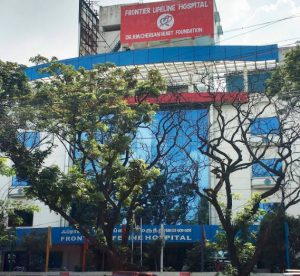Sickle Cell Anemia
What is Sickle cell anemia? Sickle cell anemia, also known as sickle cell disease, is a genetic disorder of red blood cells. There are insufficient healthy red blood cells to transport oxygen throughout the body. Red blood cells are typically disc-shaped, allowing them to travel through even the tiniest blood vessels. However, in sickle cell disorder, […] Read More
Top Doctors For Sickle Cell Anemia Treatments
Top Hospitals For Sickle Cell Anemia Treatments
Sickle Cell Anemia
What is Sickle cell anemia?
Sickle cell anemia, also known as sickle cell disease, is a genetic disorder of red blood cells. There are insufficient healthy red blood cells to transport oxygen throughout the body. Red blood cells are typically disc-shaped, allowing them to travel through even the tiniest blood vessels. However, in sickle cell disorder, the red blood cells have an abnormal shape that is crescent-like, resembling a sickle. This abnormality makes them sticky, rigid, and prone to getting stuck in small blood vessels. This slows or blocks blood and oxygen from reaching different parts of the body, which may lead to pain and tissue damage. Picture Courtesy: very well health
Sickle cell disease is an autosomal recessive condition in which there is a mutated form of hemoglobin and hemoglobin S (HbS).
Unfortunately, there’s no cure for sickle cell anemia. But there are treatments that help to relieve pain and prevent complications associated with the disease.
Picture Courtesy: very well health
Sickle cell disease is an autosomal recessive condition in which there is a mutated form of hemoglobin and hemoglobin S (HbS).
Unfortunately, there’s no cure for sickle cell anemia. But there are treatments that help to relieve pain and prevent complications associated with the disease.
Types of sickle cell anemia.
There are four main forms of sickle cell anemia caused by different mutations of the hemoglobin genes.-
-
- Hemoglobin SS disease: This is the most common and most severe type of all sickle cell disease. It is due to hereditary copies of the hemoglobin S gene from both parents.
- Hemoglobin SC disease: This is the second most common sickle cell disorder. It is due to the heredity of the hemoglobin C gene from one parent and the hemoglobin S gene from the other. It is less severe.
- Hemoglobin SB+ (beta) thalassemia: This upsets and reduces beta-globin gene production; as a result, the size of the red blood cell is also reduced.
- Hemoglobin SB 0 (Beta-zero) thalassemia: It also has to do with the beta-globin gene. Its symptoms are similar to that of hemoglobin SS anemia but can sometimes be more severe. It has a poor prognosis.
-
Sickle cell anemia diagnosis
The doctor can carry out a sickle cell anemia diagnosis with the following investigations.-
-
- A review of medical history.
- Physical examination.
- Blood tests: hemoglobin electrophoresis to determine if a person is a carrier; blood counts to estimate hemoglobin level, normal or abnormal; and blood films to detect the appearance of red blood cells, normal or sickle-shaped.
- Genetic testing helps identify alterations in gene mutations that cause sickle cell anemia.
- Doctors can diagnose sickle cell disease in unborn babies by sampling some of the amniotic fluid in the mother’s womb.
-
Sickle cell anemia treatment
Sickle cell anemia can be treated in various forms. Here are a few ways to treat patients.-
-
- Medication: Medications are advised to the patients to relieve pain and prevent the worsening of anemia. The list of medications advised to the patient are:
-
-
- Pain management- Painkillers and IV fluids help treat pain due to sickle cell anemia.
- Penicillin- young children <5years of age are often advised oral penicillin drugs to prevent pneumonia.
- Hydroxyurea- hydroxyurea is an anticancer drug to reduce the frequency of painful sickle cell crises and help prevent acute chest syndrome.
- L-glutamine oral powder- helps in reducing the frequency of pain crises.
- Crizanlizumab- helps reduce the frequency of pain crises in adults and children older than 16years.
- Voxelotor- used to treat sickle cell disease in adults and children older than 12years. This drug is useful in reducing the risk of anemia and improving blood flow throughout the body.
-
-
- Infection prevention treatment: immunizations, vaccinations, and antibiotics are given to help prevent frequent infections.
- Stem cell (or bone marrow) transplant: This technique involves the replacement of bone marrow affected by sickle cell anemia with healthy bone marrow from a donor.
-
 Picture Courtesy: emedicine
Other treatment procedures could be
Picture Courtesy: emedicine
Other treatment procedures could be
-
-
- Blood transfusion: to improve the transport of oxygen and nutrients. It helps to address anemia, which helps to reduce severe symptoms and complications such as stroke.
- Drinking plenty of water daily, as much as 10 glasses. This helps prevent and manage pain crises. At times, intravenous fluids may be necessary.
- Regular eye checks to screen for retinopathy.
-
Symptoms
What are the most common symptoms associated with sickle cell anemia?
Symptoms associated with sickle cell anemia are listed below:
-
-
- Anemia is the shortage of red blood cells in the body. This, in turn, can cause dizziness, shortness of breath, and tiredness.
- Pain crisis or sickle crisis: occurs due to blockage of blood flow to an area due to sickled cells being stuck in the blood vessels.
- Acute chest syndrome occurs suddenly when sickling occurs in the chest, which can be life-threatening.
- Splenic sequestration (pooling): sickling crises due to the pooling of sickle cells in the spleen. This leads to a sudden drop in hemoglobin and can be life-threatening if not promptly treated.
- Jaundice is a yellowing of the mouth, skin, and eyes.
- Swelling of hands and feet.
- Priapism.
- Delayed growth or puberty.
- Vision problems.
- Frequent infections.
- Excessive fatigue or irritability due to anemia.
- Fussiness (in babies).
- Bedwetting (from associated kidney problems).
-
Causes
How is sickle cell anemia caused?
Sickle cell anemia, also known as Sickle Cell Disease, is an inborn condition that results from a genetic defect.
Sickle cell anemia disease is caused due to defect in the hemoglobin- beta gene found on chromosome 11. Those who inherit just one gene are healthy and termed “carriers” of the disease.
Whereas for those who inherit abnormal genes from both their parents, the chance of having the disease is high. Some ethnicities are more susceptible to sickle cell disease than others. It also affects people from Hispanic, South European, Middle Eastern, and Asian Indian backgrounds.
FAQ
What are the risk factors for sickle cell anemia?
Sickle cell anemia is a genetic disorder. Therefore, the risk factors for sickle cell anemia are
-
-
- Having a family history of sickle cell disease.
- Having one or both parents be carriers.
- Both parents have sickle cell traits.
-
What are the complications of sickle cell anemia?
Complications of sickle cell anemia are quite a bunch. They include;
-
-
- Stroke and seizures.
- Acute chest syndrome is caused by sickle cells blocking blood vessels in the lungs. It can be fatal.
- Pulmonary hypertension is high blood pressure in the lungs.
- Multiple organ damage or failure.
- Blindness: Due to blockage of tiny blood vessels supplying the eyes by sickle cells.
- Leg ulcers.
- Skin ulcers.
- Gallstones.
- Priapism.
- Pregnancy complications. Sickle cell anemia can increase the likelihood of high blood pressure or blood clots during pregnancy.
- Poor hydration.
-
What is the outlook for sickle cell anemia?
The prognosis of sickle cell anemia varies, as some patients experience frequent and painful sickle cell crises while others very rarely experience attacks.
How to prevent sickle cell anemia?
The best means of preventing sickle cell anemia is through genotype compatibility. Those with sickle cell traits should only marry those with no traits and are not carriers.
What is the lifestyle or home care for sickle cell anemia?
These include;
-
-
- Apply heating pads for pain relief.
- Take folic acid supplements daily, but as recommended by the doctor.
- Consume a sufficient amount of fruits, vegetables, and whole wheat grains. This can help the body produce more red blood cells.
- Drink plenty of water. This helps reduce the chances of sickle cell crises.
- Exercise regularly but not to the extreme.
- Reduce stress; it helps to reduce crises.
- If need be, use over-the-counter medications with high caution.
- Quit smoking.
-
When should I be concerned about sickle cell anemia and see a doctor?
Whenever one notices any of the following symptoms listed below:
-
-
- Fever.
- Unexplained incidents of severe pain.
- Swelling in the hands or feet.
- Abdominal swelling, especially if the area of swelling is tender to the touch.
- Pale skin or nail beds.
- Jaundice.
- Signs or symptoms of a stroke.
-










































